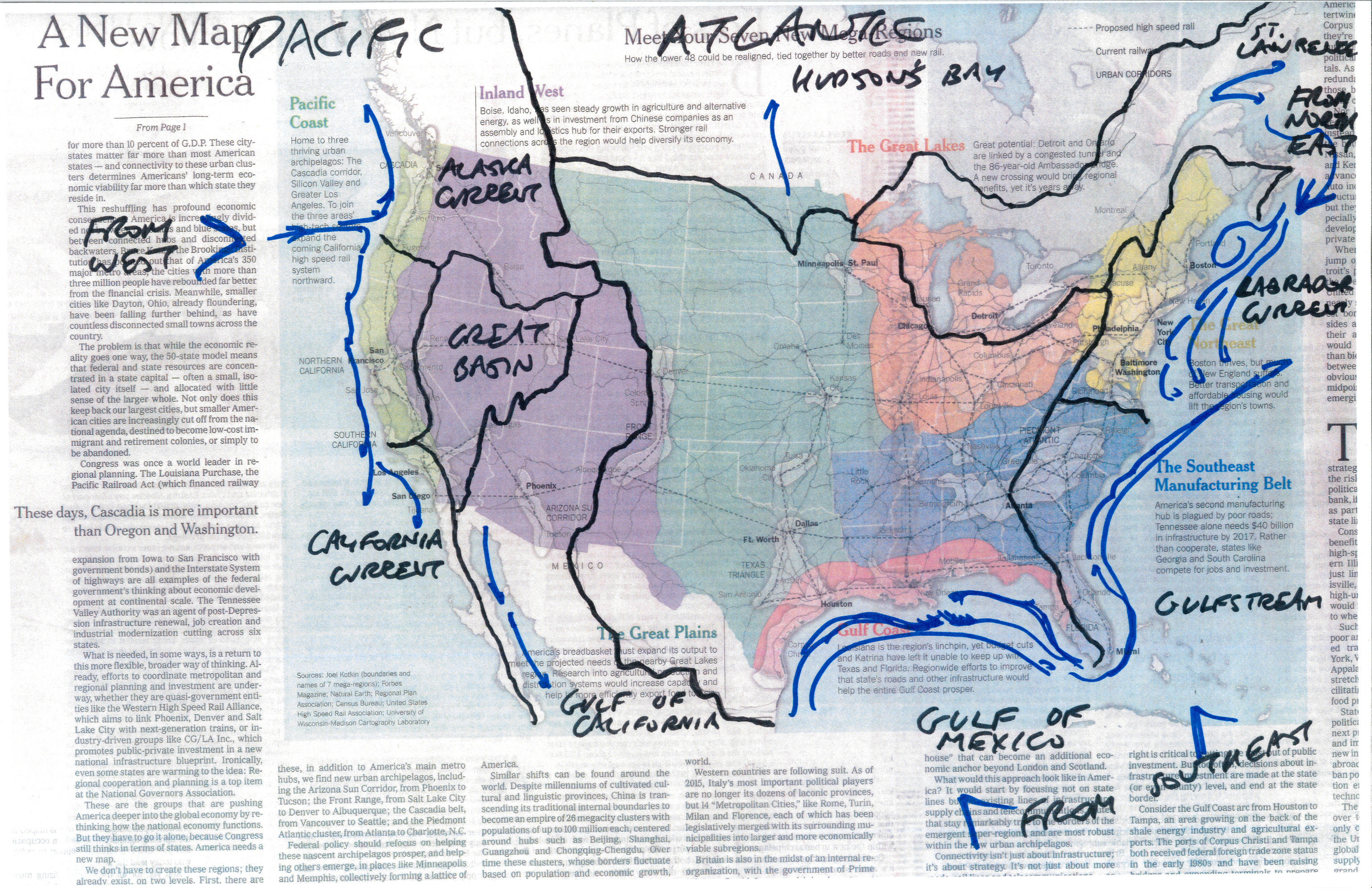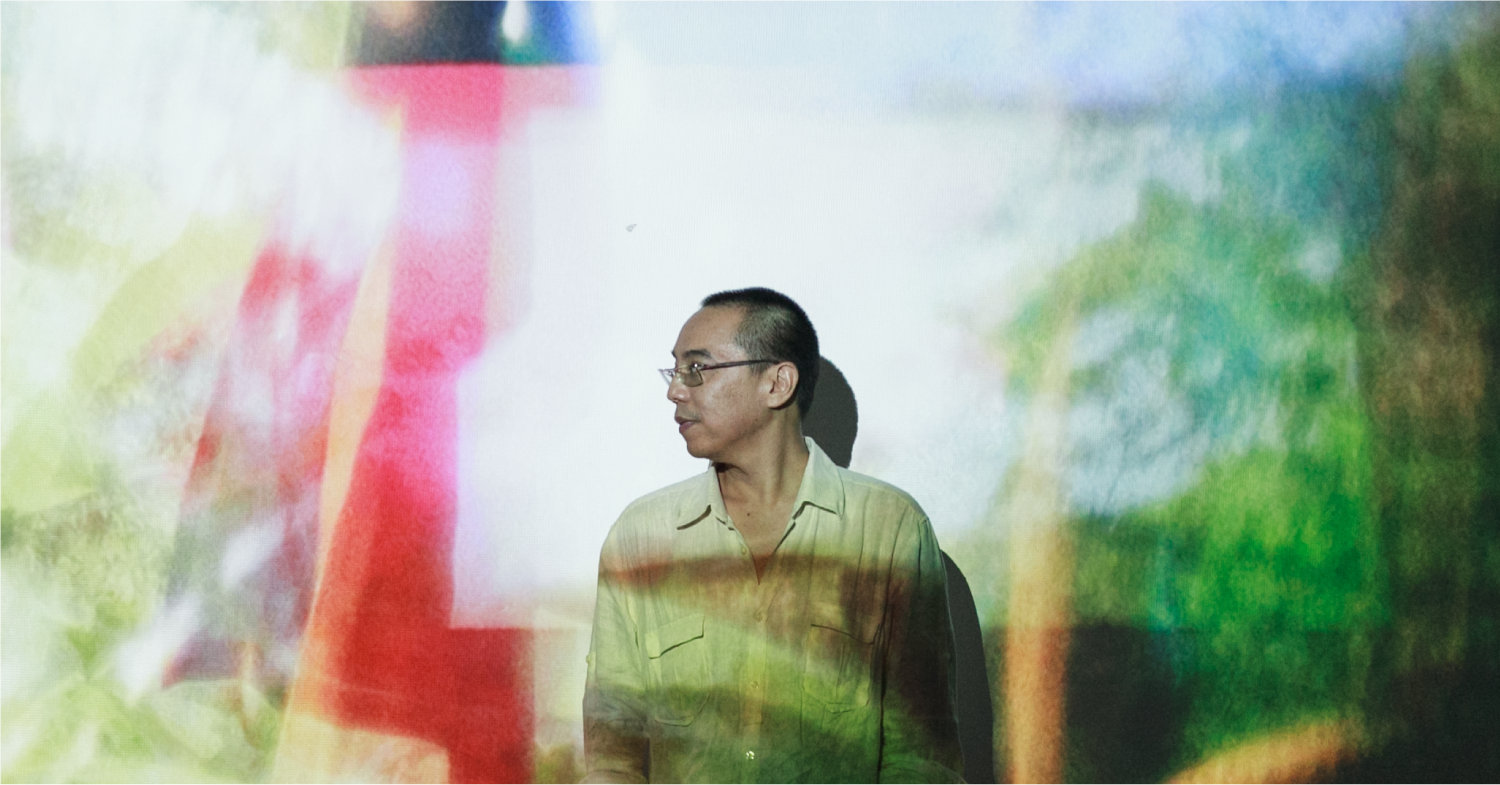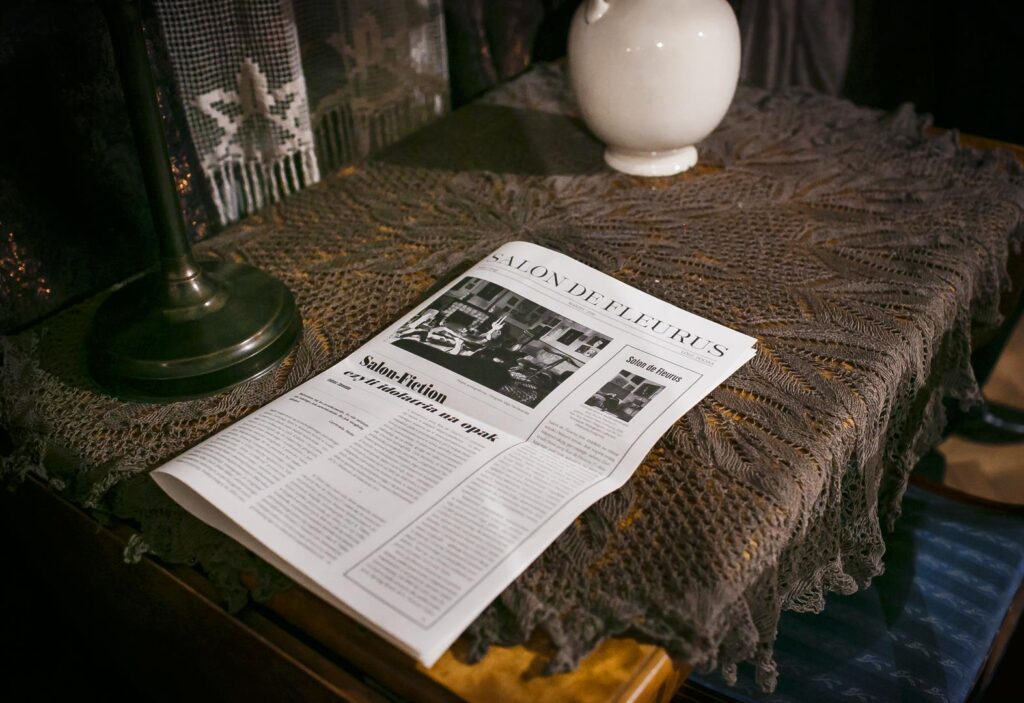Posted on March 30, 2016
.JPG)
Posted on March 30, 2016
.JPG)

Posted on April 25, 2016
“A New Map for America” (Sunday Review, April 17) was published, in similar delineations, but for all of North America, 36 years ago, by young citizens of the USA, all of whom have gone on to gain cultural prominence. The citizens were visual artists in NY. They banded together in 1979 as The Offices of Fend, Fitzgibbon, Holzer, Nadin, Prince & Winters. At that time, they offered consultations to clients outside the art world, in renewable energy, in 1st Amendment principles, in naming and publicizing an institution, in re-directing UN agencies. The Offices has split up, as often happens in the art world, but the group has continued to spark changes in policy. Now, the “New Map for America” can be reclaimed and directed towards its original objective: “Political Economies After Oil.”

Peter Fend, Politcal Economies After Oil, 1980, courtesy of Peter Fend. (Produced for a group show which included work by Jenny Holzer).
Organizing North America, not just the USA, into “more functional configurations,” we used the principle of gravity. Water, soil and waste flows downhill, to the sea. Water is crucial. The divisions of flows to the sea in the USA roughly align with the colored areas proposed by Parag Khanna. Yellow is the Northeast Seaboard; we simply limit it to the Appalachian ridge. Purple and light green are west of the Continental Divide, flowing to the Pacific or Great Basin. Orange, green and much of the brown and blue slope towards the Gulf of Mexico. The Tidewater South separates from the Northeast about where the warm Gulfstream separates from the cold Labrador. As Mr. Khanna asserts, the Great Lakes should be co-administered with what slopes in from present-day Canada. We showed all this in 1980 Organize by basins, including the saltwaters, and one can address this fact, asserted by Holzer in her headline for our map: “The present political and economic division of space does not satisfy our needs.” That was in 1980. The situation now is much worse.
Do not think of Parag Khanna’s analysis and proposal as a fresh perspective. A similar voice, backed up by worldwide research and development in decades since, was advocating for these very reforms two generations ago. Halfway through that span of time, in December 2001, I opened a cover story in Mute magazine featuring such thinking with the phrase “To get beyond the present impasse, we must go beyond petroleum.”
Our proposal for reorganizing North America along watershed lines has not gone unoticed. In 2012, when Ernest Callenbach, an early promoter of these ideas [in his Ecotopia series], died, the 1980 poster was re-exhibited internationally. When will the ideas sink in? Under whose Presidency will we act? To “make America great again,” or to have “a future to [survive] in,” we need to restore our soil and water, along the lines of “a new map.”

Posted on July 12, 2016
Kaona Pongpipat reviews Apichatpong Weerasethakul: The Serenity of Madness at MAI IAM in Chiang Mai, Thailand for The Bangkok Post.
Walking inside the exhibition, however, the non-linear set-up of the works feels more like a trip from one of Apichatpong’s obsessions as a storyteller to another—the traumatic political history, the possibility of reincarnation, the presence of spirits, the persistence of folk tales, the nature of sexuality, etc. From one dimly-lit gallery to another, these short video works are installed close to one another, their lights and sounds intermingled, and there’s good ground why “madness” is the keyword in the show.
Read the rest of Pongpipat’s review here.

Posted on
Jirat Prasertsap of The Matterand Apichatpong Weerasethakul discuss what drives in creating his work, how he sees contemporary Thai society and its development, nationalism, and politics. In the interview Weerasethakul suggests that he thinks of his films as more open and interpretative, coming from his views and experience, not solely a political message or a direct social critique.
You can read the interview here.

Posted on July 13, 2016
Posted on July 13, 2016
Sam Lefebvre reviews The Ocean After Nature in The Wire 390.
The Ocean After Nature provokes viewers to reconsider the contours of global capitalism. It does not explore the plaza or the town square, widely thought to have supplanted the factory floor as the foremost sites of political expression. And it does not really explore the gaseous, diffuse networks of international finance that many political-economic theorists consider the definitive feature of contemporary capital circulation. The exhibition, curated by Alaina Claire Feldman, centres instead on the transport of goods and bodies and bodies-as-goods across bodies of water, a hallmark of globalisation with a pervasive impact on everyday life that’s often neglected in the age of seemingly instantaneous commerce online.
Art that investigates the anthropocene, the period in which human activity affects all aspects of the climate, is often project- or solution-based, featuring documentation of environmental activism under the banner of social practice. The Ocean After Nature certainly emphasises the environmental and human cost of the convoluted systems implemented by companies and countries seeking market advantage and neocolonial dominance. But it’s not particularly didactic In fact, some of the strongest work is in awe of the ways humans at the periphery of global capitalism have adapted.
Visit The Wire, here, for more information regarding the August 2016 issue.

Posted on July 25, 2016
Posted on July 25, 2016
Wendy Vogel reviews The Ocean After Nature exhibition for Frieze. In her review, Vogel explores the “meditative, essayistic approaches to the theme” of the exhibition taken by the 20 artists and collectives featured in The Ocean After Nature.
…the exhibition’s strength is in its framing of the ocean not just as a site of environmental catastrophe, but as a metaphor for all in nature that cannot be tamed. This is best expressed in works that consider the ocean’s affective qualities – as in Renée Green’s film Endless Dreams and Water Between (2009), an epistolary exchange about ‘archipelago mind’ – rather than in a single powerful image. By offering more poetic speculations than activist solutions, ‘The Ocean After Nature’ is like a diver, breaking the surface to plumb the depths of our perceptions.
Read the entirety of the review here.
Posted on September 7, 2016
Critic Narawan Pathomvat picks Apichatpong Weerasethakul: The Serenity of Madness as a must see exhibition. Pathomvat writes: Moving through the dark labyrinthine space of The Serenity of Madness, Apichatpong Weerasethakuls first survey of video installations and short films in his home country of Thailand, which later travels to Para Site in Hong Kong, is like making a nocturnal journey into a primitive cave of delirious unknowns. In other words, it is an experience not dissimilar to indulging in any one of his films. Read the review here.
Posted on October 18, 2016
Pedro Reyes has two works on view as part of Push Play now through December 13 at the Sheila C. Johnson Design Center. Sanatorium: City Leaks, 2011-present and Feather Fun, 2012 highlight Reyes’ interest in interactive art notably explored in his new Creative Time commission DOOMOCRACY. Creative Time curator Nato Thomson writes of DOOMOCRACY:
Conjuring Dante’s Inferno, Doomocracy asks us to briefly “Abandon all hope, ye who enter here.” In this performative artwork– part Fox News, part Heironimous Bosch — the traditional horrors transform from creepy castles, vampires and zombies to corporate boardrooms, investors, and gun toting racists. Doomocracy acts as a mirror, perhaps a wacky fun house mirror, of the traumatic world outside. And in the spirit of Halloween, allows us to briefly confront, and even satirically enjoy, the demons that we, as people of this planet, live with daily.
Find out more about DOOMOCRACY here and read Holland Cotter’s review of the exhibition here.

Pictured are three broadsheets produced for the exhibition. From left to right: ICI, New York, NY (October, 2015); Museum Sztuki, Łódź, Poland (March, 2016); and Museum of Contemporary Art Zagreb, Zagreb, Croatia (October, 2016). Courtesy of ICI.

Salon de Fleurus, installation view, Muzeum Sztuki, 2016, courtesy of ICI.

Salon de Fleurus, installation view, Museum of Contemporary Art Zagreb, 2016, courtesy of ICI.
Posted on October 24, 2016
Salon de Fleurus has been conceived from the start as a modular exhibition model. As the exhibition travels, art spaces source local details such as furniture, literature, decorations, and objects that further relate to early modernity, and organize readings, talks, screenings and events that use the salon as a forum for discussing diverging art historical narratives.
In addition, a broadsheet catalogue designed by Garrick Gott is produced at each hosting art space. This publication includes press and images from the Salon’s twenty-year history along with newly commissioned essays and interviews. The original copy, created by ICI, is presented to the art space as a template. Each art space then has the opportunity to translate, curate, and produce new content for the publication to supplement the exhibition. Therefore, much like the exhibition itself, the broadsheet becomes a fluctuating space for uniquely relevant discourse tailored to each location. This collection of texts and images serves as an entry point for readers and visitors to the exhibition through a distinctly trans-historical lens due to the diverse compilation of materials. In this way, each art space becomes an active participant in framing the narrative of the show by contributing to a collective archive. Some of the authors and figures whose work has been represented in these publications so far have been Kim Levin, Alfred H. Barr Jr., Łukasz Zaremba, Walter Benjamin, Michal Libera, and Petar Prelog. These pieces are complemented with press clippings from news articles about Gertrude Stein and Salon de Fleurus.
ICI